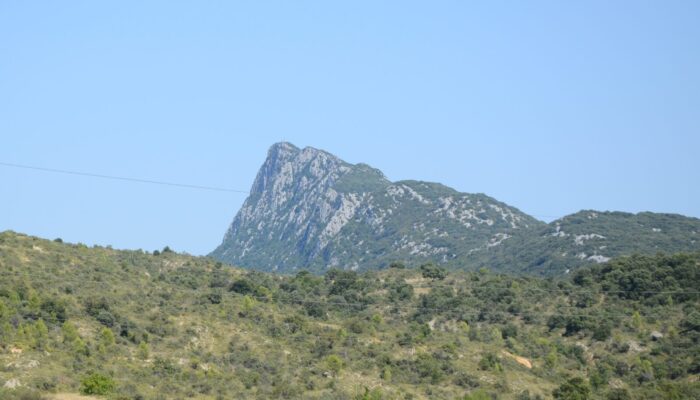The region around the Pic Saint-Loup is a popular destination for many European universities to teach mapping field courses – and there is a reason for it, even besides the great landscape, good food and nice weather. Let’s take a tour to discover why! The Pic Saint-Loup itself is indeed so impressive that some former students return at later stages in life “dragging” along other geologists ...[Read More]
Features from the Field: Sheath Folds
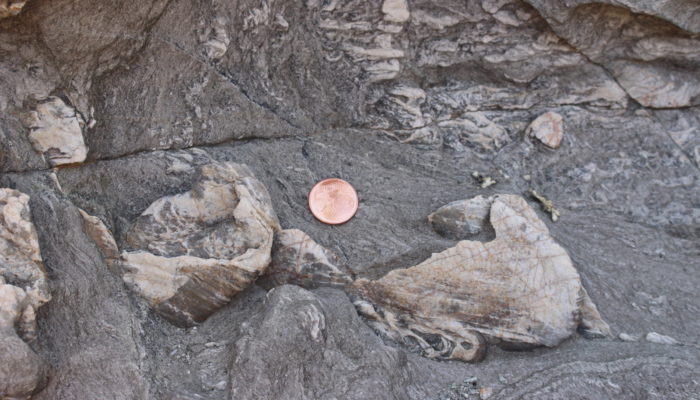
Shear zones are areas of intense deformation that localize the movement of one block of the crust with respect to another. In previous posts, we have seen that shear zones contain some very deformed rocks called mylonites, lineations that tell us the direction of movement, and useful kinematic indicators, such as S-C fabrics, that allow geologists to understand which way the rocks moved. However, ...[Read More]
Features from the Field: Stretching Lineations
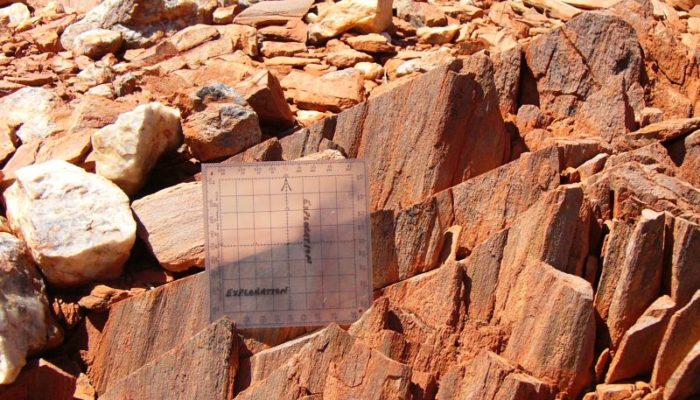
Deep beneath our feet, deformation of rocks at high temperature produces impressive structures such as shear zones, that localize the movement of two volumes of rock with respect to one another. Shear zones are strongly deformed bands with strongly foliated structures (i.e., with rocks that look like a pile of leaves) and kinematic indicators, such as S-C fabrics, that tell us geologists which way ...[Read More]
Features from the Field: Shear Zones and Mylonites
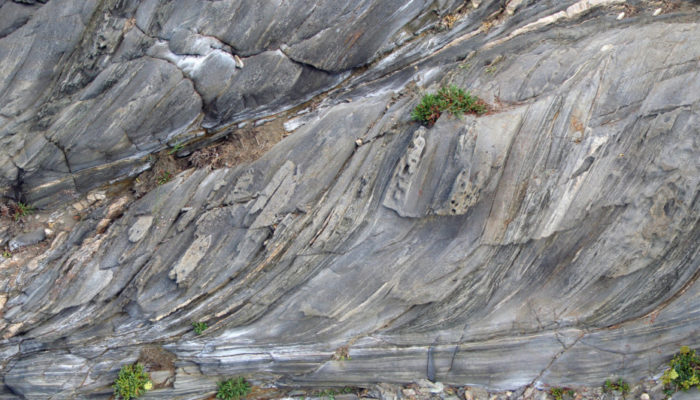
The San Andreas Fault in California, the Alpine Fault in New Zealand, or the Main Frontal Thrust in the Himalayas are some of the most famous and largest fault zones that accommodate the relative displacement between two adjacent crustal blocks. Such faults, however, represent only the shallower expression of something much bigger: a crustal shear zone. In the first 10 kilometers or so of the crus ...[Read More]
Features from the Field: Angular Unconformities
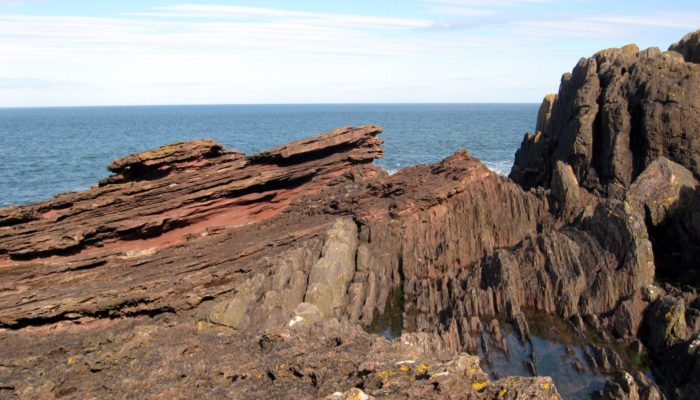
An angular unconformity is an erosional surface that truncates older, tilted sedimentary layers and that is overlain by younger layers, oriented parallel to the unconformity. The discovery and interpretation of angular unconformities, like the famous Hutton’s unconformity at Siccar Point, Scotland, marked a paradigm shift in the geological theories of the 18th century. At that time, the theo ...[Read More]
Features from the field: crenulation cleavage
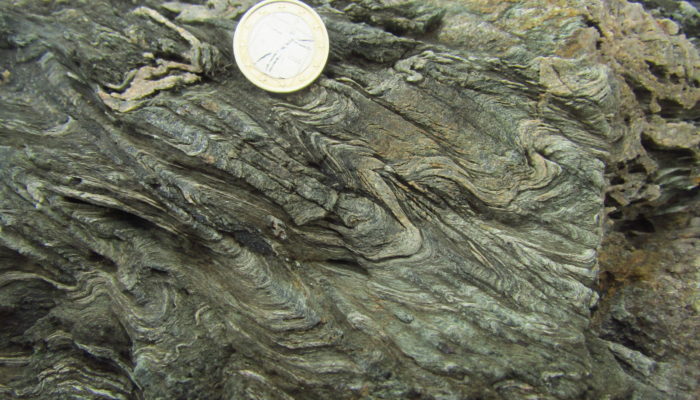
In one of the former episodes of the ‘Features from the field’ series we have talked about foliations, and how they develop when rocks are pushed together by the movement of tectonic plates. It is quite uncommon, however, that tectonic forces are active in the same direction for an unlimited period of time. The rule, rather than the exception, is that the orientation of tectonic forces ...[Read More]
Features from the field: Foliation
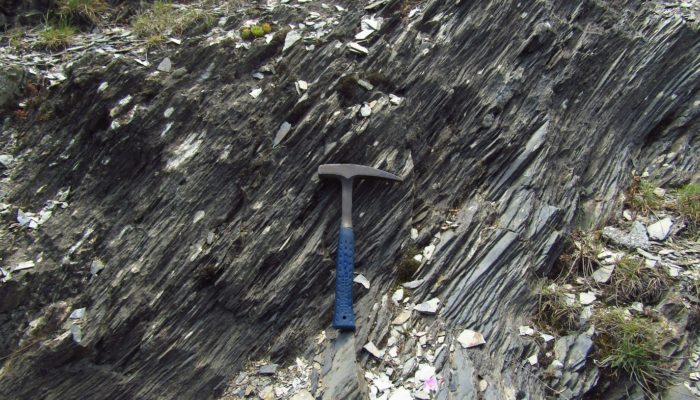
Have you ever walked on a mountain trail, passing past outcrops of rocks and noticed that many rocks appear to be split along a well-defined orientation? If you have, you might have seen one of the most important structures in metamorphic rocks – called foliation. The term ‘foliation’ derives from the Latin folium, meaning ‘leaf’. A rock with a foliation looks like a pile of R ...[Read More]
Minds over Methods: Dating deformation with U-Pb carbonate geochronology
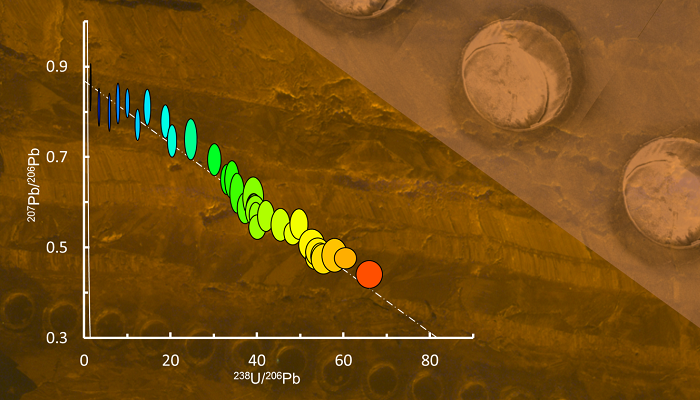
For this edition of Minds over Methods, we have invited Nick Roberts, a research scientist at the British Geological Survey, working within the Geochronology and Tracers Facility (GTF) running a LA-ICP-MS laboratory. Nick has a background in ‘hard-rock’ geology, incorporating geochemistry, geochronology, and magmatic and metamorphic petrology across a wide range of tectonic settings, and is now in ...[Read More]
Features from the field: Boudinage
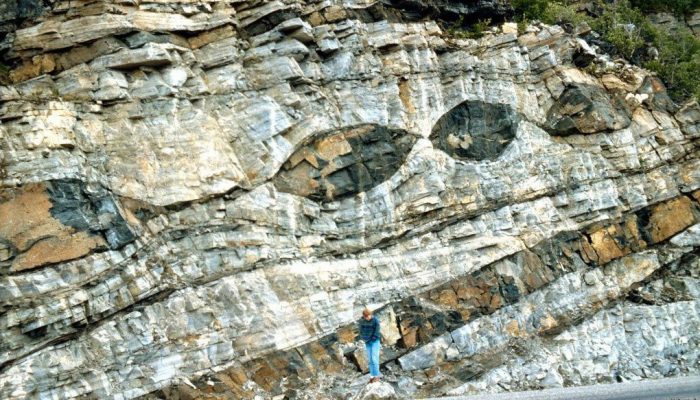
The Features from the Field series is back! In our previous posts, we have shown how rocks can deform during ductile deformation, producing folds. Folds very commonly develop in rocks when rock layers are shortened by tectonic forces in a specific direction. On the other hand, when layers are extended, we develop boudins. Boudins – the term comes from the French word for ‘sausage’ – are frag ...[Read More]
Meeting Plate Tectonics – Eric Calais
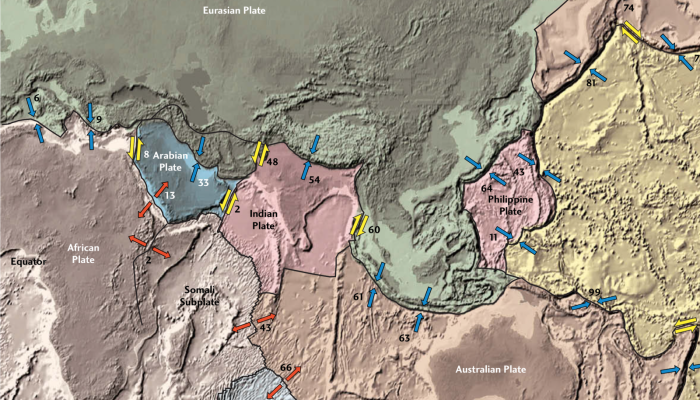
These blogposts present interviews with outstanding scientists that bloomed and shape the theory that revolutionised Earth Sciences — Plate Tectonics. Get to know them, learn from their experience, discover the pieces of advice they share and find out where the newest challenges lie! Meeting Eric Calais Eric Calais is Professor of Geophysics and Head of the Geosciences department at the Ecole Norm ...[Read More]

